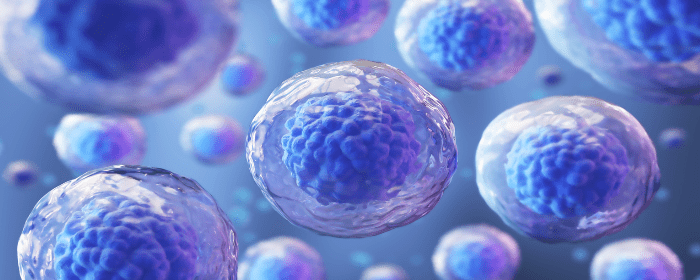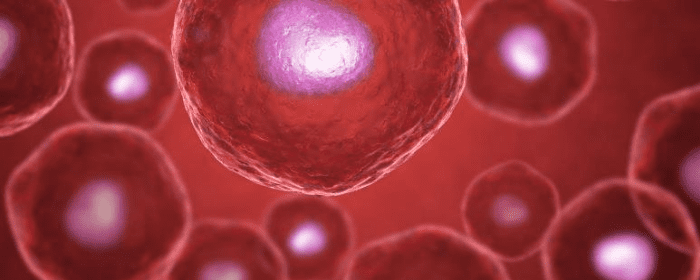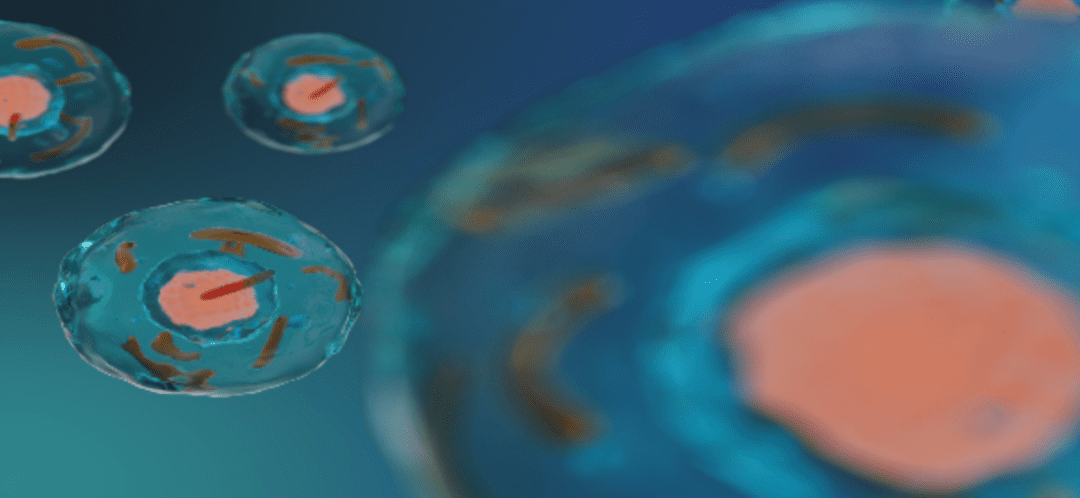
by admin | Jun 24, 2022 | Mesenchymal Stem Cells, Exosomes, Stem Cell Research, Stem Cell Therapy
Mesenchymal stem cells (MSCs) have been widely studied and increasingly recognized as a potential therapeutic with the ability to initiate and support tissue regeneration and remodeling. While over 1100 clinical trials have been conducted to assess the therapeutic benefits of MSCs, there continues to be widespread variation surrounding the potential treatment outcomes associated with these cells.
This review, authored by Chang, Yan, Yao, Zhang, Li, and Mao, focuses primarily on profiling the effects of the secretome, or the effects of paracrine signals of MSC, as well as highlights the various engineering approaches used to improve these MSC secretomes. Chang et al. also review recent advances in biomaterials-based therapeutic strategies for the delivery of MSCs and MSC-derived secretomes.
Recent research has demonstrated paracrine signaling as the primary mechanism of MSC therapeutic efficacy. This shift towards the MSC secretome in applications ranging from cartilage regeneration to cardiovascular and other microenvironments has demonstrated its therapeutic potential in prevalent injury models. Additionally, the versatility of MSCs allows them to be specifically tailored using biomaterials toward specific therapeutic outcomes.
A specific example of MSC secretome’s therapeutic potential is their ability to support cardiovascular tissue repair through minimization of fibrotic scarring of cardiac tissue typically observed to occur during a myocardial infarction (MI). Additionally, research has demonstrated MSC secretomes facilitate the proliferative, angiogenic, and anti-inflammatory phases of the wound healing process.
Secretome transfer occurring between MSCs and other cells in the target area primarily occurs through the release of extracellular vesicles (EVs) and is considered a safer form of therapeutic application compared to MSC therapy. MSC secretomes can also be specifically engineered through hypoxia, treatment with bioactive agents, and modulating cell-cell and ECM interactions in the MSC culture.
One of the biggest challenges facing the therapeutic efficacy of MSC is their limited cell survival, retention, and engraftment following injection or transplantation (found to be as low as 1% surviving one day after implantation). Recent studies have demonstrated MSC secretome, and specifically, EVs, although they remain a significant obstacle, are a promising alternative and able to bypass a number of cellular challenges, including cell survival.
Further consideration and approaches to increasing survival rates of MSCs include experimenting with a wide variety of biomaterials as a way to promote adaptation in the target implantation area. This includes looking for biomaterials to regulate oxygen tension levels, glucose supply, mechanical stress, and pH levels, which collectively can be used to regulate metabolic pathways of the MSC, effectively influencing cell survival and their ability to be used as therapeutic treatment options.
Despite the recent advances in the use of MSC secretomes and their delivery strategies, Chang et al. call for continued study of the subject and specifically recommend developing a specific set of paracrine cues to be used as a well-defined formulation in future therapeutic applications.
The authors also point out that the use of EVs and other direct applications of the MSC secretome are thought to be promising for the treatment of osteoarthritis, ischemic stroke, and coronavirus-related diseases. Considering this, Chang et al. highlight the increasing need to fully understand the paracrine signaling effects of MSC therapies and the delivery strategies associated with this application.
Source: “Effects of Mesenchymal Stem Cell‐Derived Paracrine Signals and ….” 12 Jan. 2021, https://onlinelibrary.wiley.com/doi/full/10.1002/adhm.202001689.

by Stemedix | May 16, 2022 | ALS, Stem Cell Therapy
As science continues to uncover the benefits of stem cell therapy, many trials and studies are bringing their focus to conditions with limited treatment options. The neurodegenerative condition amyotrophic lateral sclerosis (ALS) is one of the conditions that greatly needs new treatment methods to slow its progression. Fortunately, recent clinical trials offer promising results. Here we will discuss Stem cell therapy for ALS.
What Is ALS?
ALS affects the nerve cells present in the brain and spinal cord. In ALS patients, the motor neurons that carry messages from the brain to the spinal cord and then to the body’s muscles progressively die off. As they die, the brain can no longer communicate with the muscles, so patients lose muscle action.
The loss of muscle control may begin with walking and standing, but patients can lose the ability to move, speak, eat, and breathe over time.
How Can Stem Cell Therapy Help ALS Patients?
Stem cells are the building blocks of cells. When prompted to divide, stem cells can either form more stem cells or become specialized cells, such as brain cells or nerve cells. Those new, specialized cells have the potential to repair and replace damaged cells.
Stem cell therapy is an inspiring option in treating ALS since researchers believe the treatment could support new cell growth and help manage the body’s immune system response. Additionally, stem cells offer the potential to regenerate the damaged motor neurons that are characteristic of the disease.
Clinical Trial Results
In an analysis of six clinical trials that examined the benefits of stem cell treatments in slowing the progression of ALS, all six trials showed stem cell therapy slowed the advancement of the disease. However, in two studies, the results were not statistically significant.
All of the studies that followed patients for six months after their stem cell treatments saw significant differences in the results of patients’ ALSFRS-R reports. Patients within the treatment groups experienced a notable slowing in the disease’s progression. In examining the methodologies of the studies analyzed, there are techniques and types of stem cells that show improved results. Notably, the most effective delivery of stem cells to slow ALS in patients is through injections into the fluid-filled space surrounding the spinal cord. In addition, studies using mesenchymal stem cells (MSCs) also saw more significant results than other stem cell therapies. To learn more contact a care coordinator today at Stemedix!

by Stemedix | Apr 4, 2022 | ALS, Stem Cell Therapy
Amyotrophic lateral sclerosis (ALS) is a progressive disease of the nervous system that targets the nerve cells in the brain and the spinal cord. Also known as Lou Gehrig’s disease, the condition eventually causes patients to lose muscle control. While ALS currently has no cure, early identification allows patients to use various therapies to delay the advancement of symptoms. Here we will answer a very common question ” what are the symptoms of ALS? “. Keep reading to learn more!
Early ALS Symptoms
Since ALS is a progressive disease, symptoms appear gradually, and patients often ignore early signs. The progression of ALS differs in each patient, as it can target varying neurons. However, there are some common early symptoms, including:
- Slurred speech
- Trouble gripping items with hands
- Issues swallowing
- Stumbling
- Muscle cramps
- Poor posture
- Trouble holding up your head
- Muscle stiffness
ALS symptoms typically begin in the extremities and the limbs before spreading through the body. Both early and later stages of ALS have no pain.
Advanced ALS Symptoms
As ALS spreads through the body, symptoms worsen. These symptoms include:
- Less muscle mass
- Struggles with chewing and swallowing
- Weaker muscles
- Poor or slurred speech
- Trouble breathing
Later stages of ALS affect more of the patient’s muscles and movement.
What Causes ALS?
While the exact cause of ALS is unknown, about 5–10% of ALS patients inherit a familial ALS form. Children of familial ALS patients have a 50/50 chance of developing the disease.
Most scientific theories on the cause center on a complex interaction between environmental and genetic factors for those with ALS and no familial connection. Smoking, environmental toxin exposure, and military service all appear to contribute to the development of the disease, although researchers aren’t entirely sure how or why.
How Can Patients Manage ALS Symptoms?
During the early stages of ALS, patients benefit from various therapies to delay the progression of symptoms. Physical therapy, occupational therapy, and speech therapy help patients improve their quality of life as the disease progresses.
Physical Therapy
Physical therapy can extend the amount of time a patient can walk unassisted. Physical therapists work with patients to retain strength in their larger muscle groups and to maintain balance and gross motor skills.
Occupational Therapy
Occupational therapy focuses more on smaller muscle movements, such as using eating utensils, brushing teeth, and getting dressed. Occupational therapists may also work with patients to find alternative methods for completing tasks as specific muscles weaken.
Speech Therapy
Speech therapy assists ALS patients in retaining their clarity of speech and swallowing and chewing as the tongue begins to weaken.
While early ALS symptoms, such as an occasional muscle cramp or feeling of weakness, are no cause for concern, if you’re noticing weakness in your hands or feet for days, it’s worth seeing a physician. Some early symptoms of ALS may also be symptoms of other, less-serious health concerns.Many patients are exploring the alternative option of stem cell therapy. This regenerative medicine therapy can help manage symptoms and help slow the progression of the condition. Mesenchymal stem cells may offer a potential benefit in how they target damaged tissues, help in neuronal and non-neuronal cell replacement, trophic factor delivery, and modulation of the immune system. If you would like to learn more about your options for treatment of ALS contact a care coordinator at Stemedix today!

by admin | Jan 28, 2022 | Chelation Therapy
Metal toxicity, resulting from lead, mercury, aluminum, and arsenic, continues to be a significant public health concern and contributes to a number of serious health issues, including damage to the central and peripheral nervous systems, compromised kidney and liver function, and damage to the cardiovascular system.
Specifically, toxic metals appear to contribute to oxidative stress in stem cells and endothelial progenitor cells (EPSs), the cells responsible for replenishing aging or damaged cells, and are an essential component for maintaining vasculature and neovascularization. The damage caused to these cells, as a result of metal toxicity, has directly contributed to vasoconstriction, hypertension, and altered gene expression.
Considering the established relationship between oxidative injury, endothelial cell dysfunction, and vascular disease, Mikirova et al. ‘s study examined the response of CD34-positive cells to chelation by DMSA. The study also compared the effectiveness of DMSA and EDTA in the chelation of toxic metals and the excretion of essential metals.
Mikirova et al. also share results related to the toxicity of lead and mercury to mesenchymal stem cells (MSCs), endothelial progenitor cells, and differentiated cells such as endothelial cells and fibroblasts. These results were obtained by comparing data obtained from 160 subjects who received oral DMSA chelation and 250 subjects who received intravenous EDTA chelation.
At the conclusion of this study, the authors were able to draw a number of conclusions, including:
- Lead and mercury inhibit in vitro metabolism of MSCs and proliferation and adult differentiated cells, with MSCs demonstrating increased sensitivity to both lead and mercury.
- DMSA demonstrated the ability to increase circulating CD34-positive cell numbers in vivo and is better at extracting lead and arsenic than EDTA – but is also more likely to increase extraction of certain essential minerals.
- Removal of toxic metals significantly improved the number of stem cells and progenitor cells in circulation.
The authors also point out that DMSA offers improved results when compared to EDTA, for lead and arsenic chelation, but with a cost of higher extraction of essential minerals – including a fifty-five-fold increase in copper extraction (meaning copper levels must be monitored and supplemented for during chelation therapy). On the other hand, clearance of essential metals during chelation by EDTA was increased over twenty-fold for zinc and manganese.
Considering the findings of this study, the authors point out that these findings, along with data published in previous studies, provide some guidelines for the clinical use of DMSA and EDTA as chelating agents.
Mikirova et al. conclude that chelation therapy demonstrates promise for repairing damage resulting from metal toxicity and for restoring circulating stem cell populations. The authors next plan to embark on a larger scale study with the hopes of gaining more data on changes in white cell and progenitor cell numbers before and after chelation therapy.
Source: “Efficacy of oral DMSA and intravenous EDTA in chelation of toxic ….” https://www.transbiomedicine.com/translational-biomedicine/efficacy-of-oral-dmsa-and-intravenous-edta-in-chelation-of-toxic-metals-and-improvement-of-the-number-of-stem-progenitor-cells-in-circulation.pdf.

by Stemedix | Jul 5, 2021 | ALS, Stem Cell Therapy
For those who are suffering from Lou Gehrig’s Disease — now commonly referred to as Amyotrophic Lateral Sclerosis (ALS) — finding treatment for the condition can seem like a never-ending quest. Stem cells have been used for several years to treat a wide variety of diseases, and many of these treatments point to the potential for further exploration.
Some of the beneficiaries of this process are ALS sufferers. Although there is no cure for ALS, stem cell therapy offers the chance to slow the progression of the disease while also helping to control its symptoms. While there are currently drug treatments available to address the disease, they all have side effects and may offer only limited means of controlling ALS.
In contrast, regenerative medicine, also known as stem cell therapy, offers a new avenue for pursuing ALS treatment, one that shows promising potential for improving patient outcomes over the long term. Regenerative medicine provides patients another path to managing their condition, one that may provide improved symptoms and potential long-term benefits.
What are Stem Cells?
The primary cells used for ALS-related stem cell therapy are called mesenchymal stem cells. These cells are derived from adipose (fat) or umbilical cord (Wharton’s Jelly) cells, and they have a unique ability to differentiate themselves into a wide variety of tissues.
Once inserted into the human body, the goal is to have them protect against cell loss by regrowing nerve cells and pathways in the brain.
Stem cell procedures like the ones used for treating ALS are generally considered to be safe, as patients rarely suffer from complications or side effects. In a study published in Neurology, for example, patients treated with mesenchymal cells did not show a markedly elevated risk for complications.
Expected Outcomes
While stem cells for ALS patients should not be seen as a potential cure, many patients have reported improvement in some areas, including:
- Repairs in nerve damage
- Reduced progression of the disease
- Motor skill improvements
- Higher energy levels
While these results can’t be guaranteed for all patients, they represent major steps forward for those who have not had success with traditional treatments or those who need more help in dealing with progressively worse symptoms of ALS.
Like many treatments for ALS, stem cell therapy is considered to be experimental, which means that it does not have approval from the FDA. However, regenerative medicine may offer a window to an improved patient experience by easing symptoms of the disease that would otherwise be debilitating. If you would like to learn more or schedule a consultation, contact a care coordinator today!






 St. Petersburg, Florida
St. Petersburg, Florida
